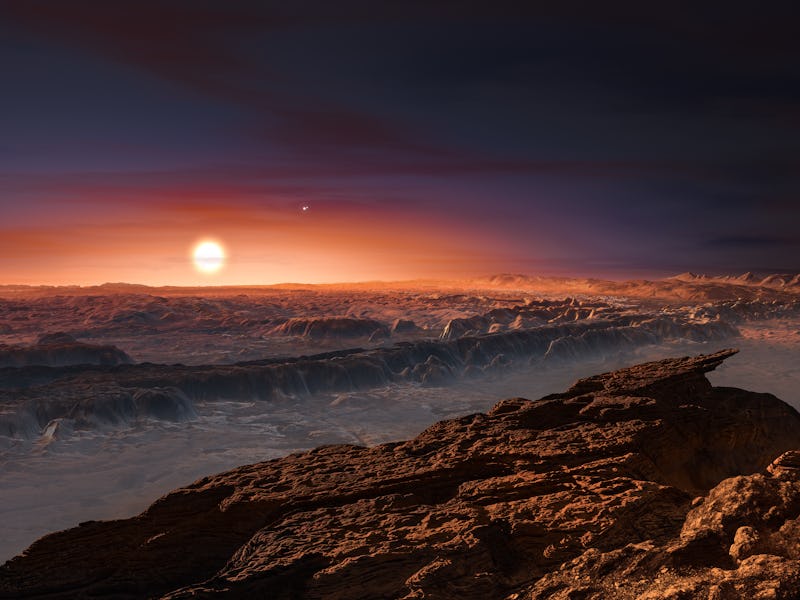A Planet Around Proxima Centauri Could Be Habitable, and It's Not Alone

Proxima Centauri is a tiny little star that, in the grand scheme of the universe, wouldn’t seem that notable except for two things: The first is that at 4.5 light-years away, it’s the closest star to our solar system. The second is that a little planet around the star just might be habitable.
Even if the planet, Proxima Centauri b, isn’t habitable, it represents an entire class of planets commonly found throughout the universe that could be habitable, according to Matteo Brogi, a Hubble Fellow at the University of Colorado Boulder. While speaking at the National Academies of Sciences, Engineering, and Medicine’s two-day workshop, “Searching for Life Across Space and Time,” Brogi explained that new methods will allow scientists to get a better sense of what’s happening on the planet’s surface.
“We’re not only talking about the closest star to the solar system,” Brogi said on Monday, “but this is a planet that is representative of an entire category.”
Could there be life on Proxima Centauri b?
Small red dwarf stars are the most common type of star in the universe and they tend to have a couple small planets orbiting them. “There are about two and a half planets per star,” Brogi said. “Every three stars there should be a habitable planet.”
“Having a small planet around a small star is better than having it around the sun,” Brogi noted, explaining that bigger stars like our yellow dwarf sun can overshadow smaller planets, making them harder to spot and study.
Because stars like Proxima Centauri are smaller than our sun, “the classical habitable zone should be much, much, much closer to the star than in the case of a solar star,” Brogi said. “Proxima Centauri b sits exactly in the middle of the habitable zone.”
The problem with Proxima Centauri b, Brogi explained, is that it is non-transiting. This limits the amount scientists can learn about it — and it’s also the reason why we don’t have a better idea of its mass. All we know for sure, at the moment, is that it’s at least 1.27 times the mass of Earth. It could be much more.
Brogi says that high-definition spectroscopy — which studies planets by separating the planet from the star while observing the two bodies’ electromagnetic radiation — offers new prospects for ground-based characterization of the planet, which should, in turn, give us a better chance of how habitable it — or other planets like it — might be.
“Terrestrial planets around M-dwarf stars are our best short-term chance to characterize potentially habitable worlds,” Brogi said.